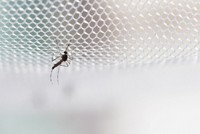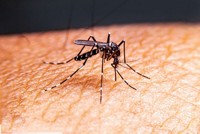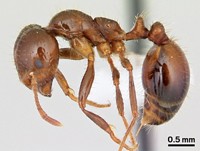Advertisement
Grab your lab coat. Let's get started
Welcome!
Welcome!
Create an account below to get 6 C&EN articles per month, receive newsletters and more - all free.
It seems this is your first time logging in online. Please enter the following information to continue.
As an ACS member you automatically get access to this site. All we need is few more details to create your reading experience.
Not you? Sign in with a different account.
Not you? Sign in with a different account.
ERROR 1
ERROR 1
ERROR 2
ERROR 2
ERROR 2
ERROR 2
ERROR 2
Password and Confirm password must match.
If you have an ACS member number, please enter it here so we can link this account to your membership. (optional)
ERROR 2
ACS values your privacy. By submitting your information, you are gaining access to C&EN and subscribing to our weekly newsletter. We use the information you provide to make your reading experience better, and we will never sell your data to third party members.
Biological Chemistry
Newscripts
Dispatches From The War On Bugs
by Carmen Drahl
May 25, 2009
| A version of this story appeared in
Volume 87, Issue 21

Nobody can accuse the armed forces of failing to explore all possible options in the fight against disease-carrying pests. At last month's American Mosquito Control Association's 75th annual meeting, held in New Orleans, researchers unveiled BUG-BUSTING STRATEGIES that involved, among other things, bright colors and fluorescent feces. Each of the projects was funded by the Deployed War-fighter Protection Research Program, a U.S. military initiative charged with protecting troops from pests, at least the six-legged sort.
Bites from sand flies spread leishmaniasis, a disease that causes disfiguring open sores and is a problem for troops in the Middle East. Since sand flies eat feces from sand rats, researchers at Louisiana State University Agricultural Center (LSU AgCenter) surmised that feeding sand rats an insecticide that is harmless to rodents, which would then pass into the feces, might be a good fly-killing strategy. But to prove it, the team needed a way to detect flies that had eaten the rats' feces.
Enter rhodamine B, a dye that is relatively safe for rodents to eat and that glows hot pink under a fluorescence microscope. The researchers, using hamsters as a test case, added rhodamine B to the rodents' diets. Sand fly larvae that ate the hamsters' feces glowed, which meant the dye could serve as a tracker when combined with the insecticide.
In combination with various insecticides, the rhodamine tracker now is being tested on sand rats in Kenya, according to Thomas M. Mascari, a postdoctoral researcher in entomology at LSU AgCenter.
Rhodamine's hot pink color might work as a tracker, but it seems that some bugs have a preference for blue hues. Navy corpsman Joseph W. Diclaro II, a graduate student in medical entomology at the University of Florida, applied that preference in making a next-generation flytrap.
Almost every housefly trap on the market is yellow, but some researchers have speculated that the flies actually find white and blue more attractive, Diclaro says. To figure out the flies' color preference, Diclaro released flies in a dark tunnel between boxes lit in different colors. Sure enough, he found the flies gravitated to blue or white rather than yellow, and designed a fold-up, field-deployable flytrap in blue.

Back in 2002, Russell F. Mizell III, a professor of entomology at the University of Florida, also developed a blue trap, but for deerflies instead of houseflies (Fla. Entomol. 2002, 85, 356). Deerflies are common in the U.S.—they inflict painful bites and they can also carry diseases. Mizell's "trolling deerfly trap" is a plastic pot painted bright blue and coated with sticky material to catch flies. When placed upside down on a rod and mounted to something in motion, such as a truck or lawnmower, the twirling and tilting makes the trap irresistible to the pests. Interestingly, Mizell found that the color cue was more important than trap size in terms of deerfly attraction. For those who are comfortable making unique fashion statements that just slay flies, a blue cup mounted on a blue baseball cap should do the trick for personal use, Mizell says.
Bug-busting isn't just for the professional killers in our armed forces. The Bill & Melinda Gates Foundation is also funding unconventional approaches for neutralizing pests in order to halt the spread of scourges such as malaria. Earlier this month, entomologist Thomas C. Baker at Pennsylvania State University received $100,000 to determine whether it's feasible to infect malaria-bearing mosquitoes with a fungus that causes a head-cold-like illness, hampering the bugs' sense of smell and their ability to find human hosts.
Carmen Drahl wrote this week's column. Please send comments and suggestions to newscripts@acs.org.





Join the conversation
Contact the reporter
Submit a Letter to the Editor for publication
Engage with us on Twitter